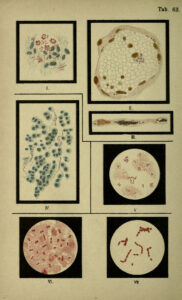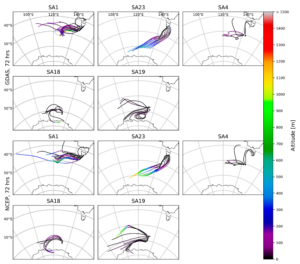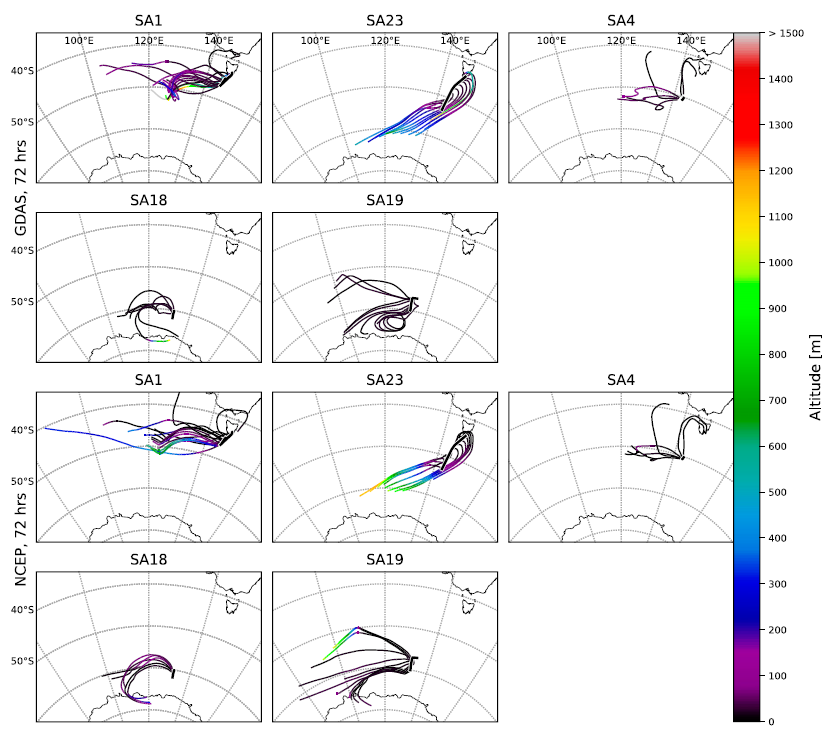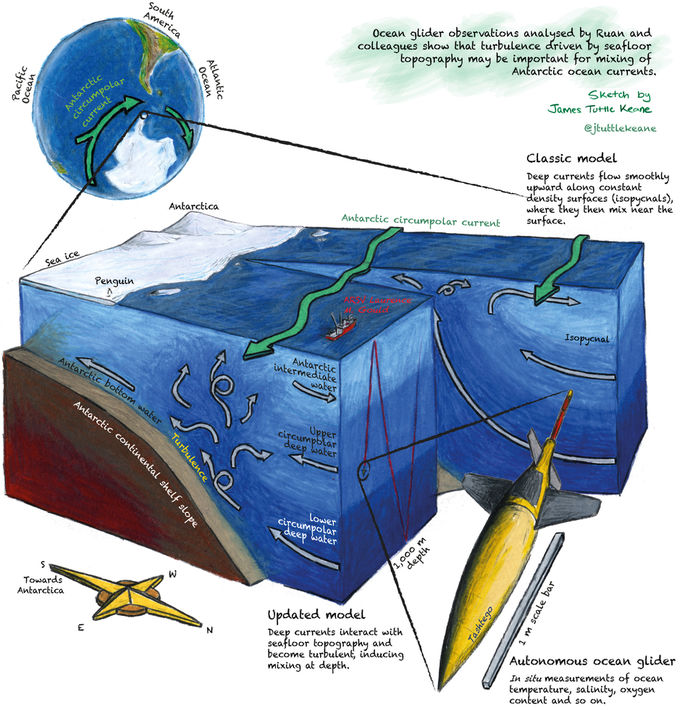References: Uetake, Jun; Hill, Thomas C. J.; Moore, Kathryn A.; DeMott, Paul J.; Protat, Alain; Kreidenweis, Sonia M. (2020). Airborne bacteria confirm the pristine nature of the Southern Ocean boundary layer. Proc. Natl. Acad. Sci. 117, 13275-13282.
“The World Fact Book: Climate”. U.S. Central Intelligence Agency. Retrieved 20 July 2020.
DOI: https://doi.org/10.1073/pnas.2000134117
Reading Time: 5 minutes
Picture this: shrink yourself down to the 1/1000th the size of the period at the end of this sentence. You are now the size of a bacteria. Due to your dimensions, you are so incredibly light (around 0.0000000000000000007 pounds) that the slightest wind could pick you up and move you around. It’s easy to believe that on a windy day you could be picked up and moved across town, maybe even across a couple cities! Around most of the globe, we see bacteria get swept up from the surface and pushed around incredible distances. For example, we can find bacteria from our soils hovering over the middle of an ocean! While all of that is well and good, recent research by scientists at Colorado State University have found quite the contrary for the bacteria around the Antarctic. While we would think that you (as a bacteria) could be moved from somewhere close like Australia, they found that this is untrue. Bacteria in the air (also known as airborne bacteria) above the Southern Ocean are sourced from the water, not land! So you (as a bacteria sitting above the Southern Ocean) are isolated in a pristine environment, free from any human influence. You are, quite literally, living a “me, myself, and I” lifestyle.
The story of you, a marine bacteria

Living in the Southern Ocean is no easy task. Water temperatures range from 28.4-50°F, the strongest average winds found anywhere on Earth are here, notorious storms have produced waves large enough to destroy cargo ships, and the ocean can freeze over during the winter! One summer day, a wave crashes and you are shot out of the water in a geyser of sea spray into the air. The surrounding wind is strong enough to push you far away from your previous home in the water. After a few days, a boat (the MNF Investigator) passes by and collects you in a large filter. They bring you on board and look at your DNA. Your DNA is like your driving license; anyone who finds it can find out who you are and where you are from. After taking enough samples of bacteria like you in the Southern Ocean, the researchers can make their conclusions.
What did the researchers learn from you?
The researchers traveled from Australia to Antarctica and back during their sampling, which occurred between January and February. They collected bacteria and categorized them into “North,” “Middle,” and “South” based on the location of the sample. In all of their samples, the scientists found very low amounts of bacteria coming from soil (between 0-0.06%), freshwater (0-0.03%), and humans (0-0.03%). Meaning, that the vast majority of airborne bacteria above the Southern Ocean DO NOT come from places like Australia where humans live.

Furthermore, they found that between 91.8-99.9% of organisms collected were from seawater. This is incredibly surprising as the MNF Investigator passed close to Tasmania, whose airborne bacteria primarily stem from their dust. For the samples close to Tasmania, the researchers still recorded exquisitely small amounts of bacteria from dust on the island (0-0.06%).
While investigating you and your DNA, the researchers wanted to see what could explain why they found you there. Using rigorous mathematical statistics, the group found that the latitude of the location of the sample could explain why they found you and your relatives there. This means that properties like the water temperature, air temperature, and wind speed were not as powerful at explaining your location in the air as the latitude of the sample. The researchers concluded that the direction of waters moving around the Southern Ocean were the reason for this discovery.
Why does it matter?
In conclusion, the researchers stated that the direction of water moving around the Southern Ocean (otherwise known as the Antarctic circumpolar current) create the distinct conditions of the behavior of airborne bacteria like yourself. The group further articulates that the communities of airborne bacteria are pristine, totally free of human influence. These bacteria like yourself significantly affect the properties of the Southern Ocean, affecting things like clouds forming and water freezing. So while you (as a bacteria) are lonely in your solitude, you have a huge effect on the conditions of Antarctica. Every coin has two sides, right?
Hey! I’m a PhD student at the University of California, Davis studying biophysics. I previously studied organic chemistry (B.S.) at the College of William and Mary. Currently, I investigate the physical responses of lipid membranes to their environmental stimuli and explore the mechanistic potential of the protein reflectin, from D. opalescens, in soft matter systems. Generally, I am interested in how biological systems respond to physical stressors across all size scales, no matter how big or small! I am driven to pursue a career in science communication and outreach, especially in translating research findings into actionable, grassroots reform. Outside of school, I surf the Norcal coastline, play ultimate frisbee, and read.



